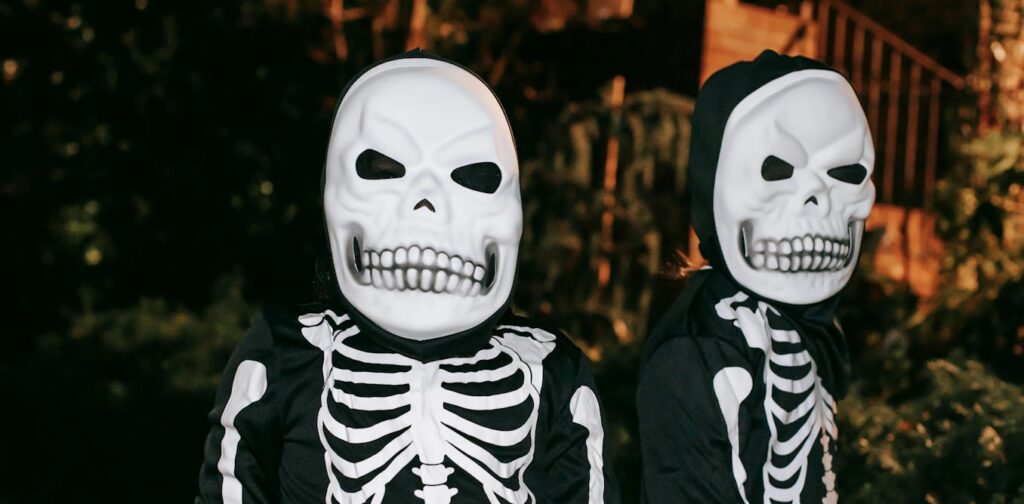
As Halloween approaches, the debate over whether its spooky themes are appropriate for children resurfaces. With its blend of bloody costumes and eerie motifs, Halloween can seem like an invitation for kids to explore topics that might be beyond their emotional grasp. However, since the era of fairy tales, the gothic and macabre have captivated young minds.
The fascination with the dark and mysterious is not new. Classic children’s stories often incorporate frightening and brutal elements. From wolves devouring grandmothers to witches luring children into ovens, these tales are rife with horror. Yet, they serve a crucial purpose: providing a safe space for children to confront fears and build resilience. Child psychologist Bruno Bettelheim noted that fairy tales suggest a rewarding life is achievable despite adversity, but only if one faces life’s challenges head-on.
“Fairy tales intimate that a rewarding, good life is within one’s reach despite adversity – but only if one does not shy away from the hazardous struggles.”
The Role of Fairy Tales in Childhood Development
Psychological studies support the idea that fairy tales help children manage their fears and develop coping mechanisms. English fantasy writer G.K. Chesterton famously remarked that fairy tales provide children with heroes to vanquish their fears.
“The baby has known the dragon intimately ever since he had an imagination. What the fairy tale provides for him is a St. George to kill the dragon.”
These stories allow children to explore their anxieties in a controlled environment, teaching them that fears can be faced and overcome. This concept extends beyond fairy tales, influencing modern narratives like the Harry Potter series, where children encounter and triumph over dark forces.
Historical Parallels: Penny Dreadfuls and Modern Media
In the 1880s, Victorian children were enthralled by “Penny Dreadfuls,” inexpensive serialized novels filled with sensational and often bloody stories. Characters like Sweeney Todd captivated young readers, much like today’s video games are sometimes criticized for their violent content. Despite concerns, these tales provided a gateway to literacy for many working-class children. Alfred Cox, who rose from an ironworker’s son to a respected doctor, credited these stories with inspiring him to seek a better life.
“Far from leading me into a life of crime, [Penny Dreadfuls] made me look for something better.”
Similarly, Labour Party politician John Paton described reading these stories as “good healthy stuff for an imaginative boy.” These narratives, akin to modern tales like Harry Potter, invite children into fantastical worlds, fostering a love of reading and imagination.
Humor in Horror: The Lighter Side of Scary
While the idea of children dressing as zombies might shock some, such themes are prevalent in mainstream children’s entertainment. In the 2012 movie “Hotel Transylvania,” zombies lose limbs for comedic effect, and Sesame Street’s Count is a playful nod to Bela Lugosi’s Dracula. These examples illustrate how horror can be humorous, offering children a way to engage with and control their fears.
Halloween, though “scary,” is an opportunity for children to engage with fear in a manageable way. They are already exposed to frightening themes in the media they consume, which helps them navigate real-life challenges. Choosing a scary costume empowers them, turning fear into something they can wear and discard at will.
Reflecting on Adult Fascinations
While adults may worry about children’s interest in horror, it mirrors their own consumption of gory and true crime content. Streaming services and podcasts are filled with such themes, suggesting a universal human fascination with the macabre. Before questioning children’s interest in the eerie, it may be worth examining whether adults’ own fixations are truly healthy.
In conclusion, Halloween’s scary themes provide children with a unique opportunity to explore their fears in a safe and controlled environment. By engaging with the macabre, they learn resilience and develop coping strategies that will serve them throughout their lives. As society continues to grapple with the appropriateness of such themes, it is essential to recognize the value they offer in childhood development.







